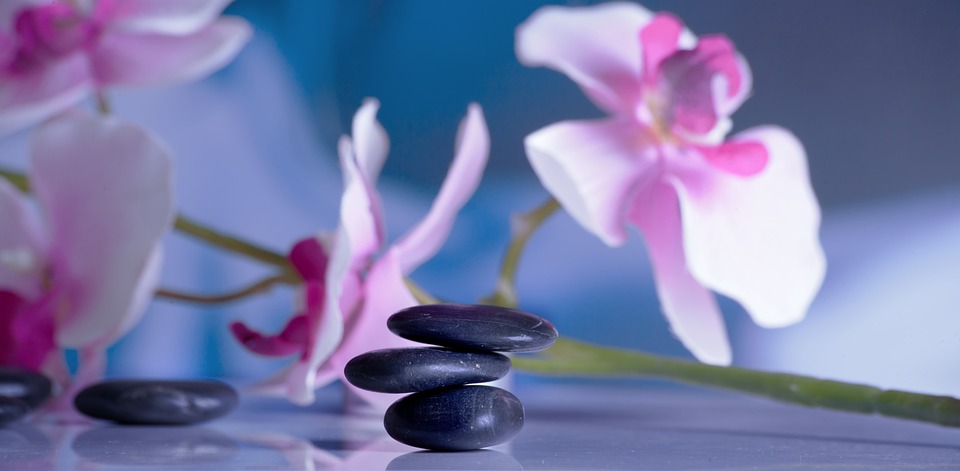Keeping a gratitude diary has grown in popularity as a self-care practice that promotes satisfaction and thanks. Research indicates that dedicating a short period of time every day to jot down your blessings may provide substantial improvements in your emotional health and perspective over time.

But can keeping a thankfulness notebook really help you adopt a more cheerful outlook, or is it simply a passing trend? This all-inclusive book provides all the information you need to comprehend the science behind thankfulness writing, start your own productive journaling routine, and maintain it over time to reap the rewards.
How Keeping a Gratitude Journal Can Help You Adopt a Positive Attitude
The basic mechanism by which gratitude journaling works is attention shifting. By writing down all the significant and tiny things you value in your life, you deliberately refocus your attention away from stressful or negative thoughts and towards the good.
This everyday reorientation gradually increases resilience, optimism, and general life happiness. It improves your capacity to face difficulties with optimism rather than bitterness or fear. In the end, it results in long-lasting improvements to your thoughts and emotions.
The benefits of thankfulness writing have been extensively and consistently studied. It has been shown through several years of research that thankfulness writing is beneficial in the following ways:
- Increase contentment and happiness in life
- Diminish tension, despair, and anxiety
- bolster your fortitude and capacity for recovery
- Boost vitality and the quality of your sleep.
- Boost patience, empathy, and a feeling of community
- strengthen bonds with others by being more appreciative
- Boost enthusiasm and determination to pursue personal objectives
Improvements in mental and emotional well-being then have a knock-on effect, promoting improved physical health, higher levels of productivity, and higher odds of success.
It is obvious that keeping a thankfulness notebook for a little while each day may significantly enhance your quality of life. However, how can you get started and maintain it?
How to Begin a Successful Practice of Writing Gratitude Journals
It’s easy to get started with thankfulness journaling. To get started, all you need is a pen and notebook. If you would rather type, thankfulness apps or digital diaries may also be excellent choices.
To start your own journaling habit, adhere to this detailed guide:
1. Start a journal of gratitude
Take out any blank notepad or diary that you own. When making a purchase, go with something that appeals to the eye. This might be a chic bullet journal, a straightforward minimalist notepad, or even an exquisitely bound diary.
For convenience, you may also utilise note-taking applications on your laptop, tablet, or phone. The thankfulness Journal App, Happyfeed, and basic note-taking applications like Google Keep or Apple Notes are a few well-liked digital thankfulness journal possibilities.
2. Decide on a Regular Time and Location
Set aside three to five minutes each day, generally at the same time, to journal. Developing and maintaining a long-term practice of thankfulness requires consistency.
Choose a time of day when you can concentrate and be by yourself. Morning, lunchtime, or early evening are often effective times. Additionally, you should choose a peaceful, cosy area of your house or place of business to write from.
3. Decide on a Time Objective
A very effective strategy is to make a daily commitment to write your appreciation for a long time—like 100 days. To get the advantages and solidify the habit, two to three months is sufficient.
Rather of writing continuously, setting a specific objective for a certain amount of time gives useful structure. But if you discover benefit in the exercise, keep going beyond your initial objective.
4. Pay Attention to Details
Recall that being precise is essential for writing an effective gratitude notebook. Over time, the emotional effect becomes lessened when posts become generic and include things like “I’m grateful for my family.”
Rather, be specific and detailed:
- “I’m appreciative that this morning my son fixed me breakfast in bed.”
- “I got to talk to my best friend and laugh for 30 minutes straight.”
- “My favourite bakery sent home lemoncello cupcakes for me and my husband just because.”
Focus on concrete experiences and thoughtful deeds performed by loved ones, no matter how little. This intensifies the comforting, uplifted emotions.

Five Gratitude Journaling Techniques That Work
Although there’s no one “right way” to maintain a thankfulness diary, following a certain format might be beneficial. These are the top 5 techniques for keeping a gratitude journal:
1. Three Ordinary Things
This method is easy to use; all you have to do is make a daily list of three things for which you are thankful. In terms of relationships, experiences, financial comforts, health, possibilities, etc., strive for specificity and diversity.
If something is still striking, say it again. But in order to keep things exciting, keep an eye out for new appreciation as the days pass.
2. Journaling Technique for Five Minutes
You are guided through responding to many questions with one to two sentences each using the Five Minute Journal system:
- I am appreciative of…
- What would be the perfect way to end today?
- affirmation every day. I’m —
- Three incredible things occurred today.
- How might I have improved upon today?
Go day after day through these thoughts without stopping. It addresses well-being in many ways than simply thankfulness.
3. Themes for Each Month
Pick a topic for your diary, such as “food” or “nature,” and write about it nonstop for a month. During that month, pay attention to all the little nuances of your topic that you could have missed. Allow the thankfulness to be amplified by the focused lens.
Theming keeps you from making the same entries again while focusing your attention. To keep things interesting, switch subjects every month.
4. Letter of Gratitude
Write heartfelt thank-you notes in your notebook to individuals you value but may not tell them enough. Give a thorough explanation of your gratitude and the ways in which they have influenced you.
To emphasise the importance, read your message many days after writing it and then send it. Gratitude is a wonderful way to strengthen connections in addition to yourself.
5. Recall Every Day Plus 3
Write about a wonderful life memory or event that makes you feel nostalgic and grateful to begin your writing sessions. Feel the feelings again.
Next, make a note of three more things, no matter how minor, that you are grateful for from today. Gratitude is amplified when history and present are together.
| Gratitude Journaling Method | How It Works | Pros | Cons |
| Three Daily Things | List 3 specific things you’re grateful for each day | Straightforward, flexible | Can get repetitive over time |
| Five Minute Journal | Answer a few prompts on gratitude, affirmations, amazing things etc. | Holistic, guides daily reflection | More time consuming |
| Monthly Themes | Focus your gratitude each month around a specific theme like relationships, nature, food etc | Concentrates awareness, prevents repetition | Requires more effort to think of theme-related items |
| Gratitude Letter | Write a detailed thank you letter to someone important to you | Deepens specific relationships | Doesn’t cultivate general gratitude |
| Daily Memory Plus 3 | Revisit an amazing memory then list 3 things from the day | Combines nostalgia with present-moment appreciation | Memory component takes more reflection |
Any of these methods done consistently can be powerful. Try out a couple formats to discover what style of gratitude journaling works best for your personality and schedule.
8 Tips for Sticking With Gratitude Journaling Long-Term
Like any habit, dedicating days in a row to gratitude journaling can still prove challenging over months or years despite good intentions. Here are some pro tips for making journaling stick long enough to reap the transformational benefits:
1. Couple journaling with an existing habit – Like writing in your journal right after your morning coffee or tea. Piggybacking onto current habits makes consistency much easier.
2. Note visible benefits – Recognize positive changes like less stress or more optimism that develop thanks to journaling. This motivates you to keep going.
3. Vary locations – Write from different spots like out in nature, at a cafe, library etc to keep things interesting.
4. Set reminders – Use phone alerts, calendar appointments and other prompts to nudge yourself each day.
5. Invest in supplies – Splurge a little on a beautiful journal, pen, app subscription or other supplies. The expense reinforces commitment.
6. Find an accountability partner – Ask a friend to journal alongside you. Check in regularly on progress and obstacles.
7. Catch gaps quickly – Lapses will happen occasionally. But make sure you journal again the very next day rather than letting your practice unravel for weeks.
8. Re-up goals periodically – Make a fresh commitment every 100 days or 6 months rather than feeling trapped indefinitely.

Gratitude Journaling Examples To Inspire Positivity
If you’re just beginning a gratitude practice, glancing at some examples can help activate ideas on what to write.
Here is a week of possible gratitude journal entry examples that model specificity:
Monday
- I’m grateful that my manager took me aside to compliment several of my recent projects. Her acknowledging my work makes me feel valued and proud.
- I got to video chat with my sister who lives far away. It filled me with joy to catch up on her life.
- Today I’m thankful for aromatherapy candles. My apartment smells amazing!
Tuesday
- My son made me an “I love you mom” card just because. His sweet homemade gift melted my heart.
- My boss brought in her famous homemade chocolate chip cookies to share with our team today. They are my fave comfort food.
- I’m grateful for the full, vibrant pink peonies blooming on my walk home. Their radiant beauty instantly lifted my mood.
Wednesday
- The sunrise this morning took my breath away with splashes of orange, pink and purple across the whole sky.
- I had an interview for a job I really want today. I’m grateful for the opportunity to share my experience and skills.
- My best friend dropped off a big care package on my doorstep filled with tea, bath goodies and a hilarious movie. Her constant kindness and generosity inspire me.
Thursday
- I’m grateful that my elderly neighbor shovelled all our front steps after some surprise late spring snow. I can’t wait to repay him with some homemade cookies.
- Today I realized how grateful I am for my comfortable bed. After an exhausting week, sinking under the covers feels amazing.
- I’m thankful that my chronic headaches haven’t hit me as frequently or severely lately. I celebrate every pain-free day.
Friday
- My partner made reservations at my favorite restaurant tonight as an impromptu treat to celebrate the end of a long week.
- I’m grateful for warm sunshine flooding through my office window today. It instantly lifted my mood.
- I took an indulgent bubble bath by candlelight before bed. The warmth enveloping me combined with delicious scents fills me with contentment.
Saturday
- My joyful three year old’s grin filled me with happiness as we danced together in the living room to his favorite song.
- Today I got to have brunch and wander through the farmer’s market with two of my closest girlfriends on a sunny day. Laughing together fills me with gratitude.
- I’m thankful for the ability to gently stretch my body through yoga poses. Moving mindfully leaves me feeling balanced and at peace.
**Sunday **
- My partner made me an omelette for breakfast with fresh veggies from our garden just how I like it.
- I feel grateful sipping lemon ginger tea curled up with my cat Bean on my lap. His comforting purring presence makes any stress melt away.
- Big fluffy snowflakes floating past my window look so peaceful. I’m grateful to stay cozy inside while snow piles up softly outside.
Use these thought-starters as inspiration. But remember, the most powerful gratitude journaling focuses on tangible details related to your own unique relationships, experiences and interests.

Frequently Asked Questions About Gratitude Journaling
How long does it take for gratitude journaling to work?
Many studies show participants start to experience increased gratitude, positivity and decreased anxiety or depression within just 2-4 weeks of daily journaling. However, the maximum benefits take longer to unfold. Significant positive changes in mindfulness, optimism and relationships often rise to the surface around 2-3 months into a consistent gratitude practice.
What time of day is best for gratitude journaling?
Any time works as long as you can dedicate a few quiet, focused minutes. Most people journal first thing in the morning to help set a positive tone for the upcoming day. Others prefer journaling at lunch or in the evening before bed to help process events and end on an uplifting note. Figure out what timing best fits into your current routine.
What happens if you take a break from gratitude journaling?
It’s perfectly normal for life to disrupt your journaling practice temporarily. The most important thing is picking back up again rather than quitting entirely after a lengthy gap. Just make your next entry special in some way to celebrate returning to gratitude journaling as a pleasant fresh start rather than a chore. The benefits will quickly accumulate again with consistency.
How long should you keep a gratitude journal?
Ideally, you should dedicate at least 100 days to daily journaling in order to firmly cement it as an automatic habit etched into your neural pathways. After that initial milestone, continuing with gratitude journaling long-term lets you compound benefits over months and years. But it’s okay to pause occasionally when you need a break before returning to it.
Can journaling on your phone or computer be as effective?
Absolutely! While pen and paper allows you to fully unplug, smartphone or laptop gratitude journaling still offers major perks. Easy portability means you can capture spur of the moment realizations of what you’re grateful for while on the go. Typing may also help some people access flow state more easily. Use whatever format feels most natural for you. The key is consistent, daily practice rather than any specific medium.
In conclusion, adopting a consistent gratitude journaling ritual requires minimal effort but delivers outsized long term rewards. A few minutes a day going through proven journaling frameworks pays off exponentially in terms of life satisfaction, relationships, resilience and mental health. Start writing your way to a positive mindset shift today!









